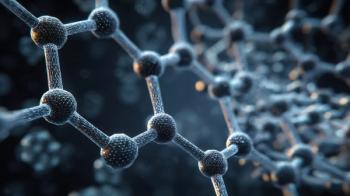
University of Oklahoma and UC Davis Researchers Probe Lipidomic Profiles with RP-LC–HRMS/MS
A joint study between the University of Oklahoma Health Sciences Center (Oklahoma City, Oklahoma) and the UC Davis West Coast Metabolomics Center (Davis, California) identified differentially regulated lipids in type 2 diabetes (T2D) and obesity through the application of reversed-phase liquid chromatography-accurate mass tandem mass spectrometry (RP-LC-accurate MS/MS).
Although metabolic alterations in human lipidome significantly impact various chronic diseases including type 2 diabetes (T2D), epidemiology and clinical studies have yet to identify clinically meaningful lipid markers for T2D. While fatty acids (FAs) are the backbone of lipid species, conflicting results on the essential FAs (including omega 3 and omega 6) in the development of metabolic diseases urge deeper evaluations of diverse clinical cohorts, including underrepresented populations. A joint study between the University of Oklahoma Health Sciences Center (Oklahoma City, Oklahoma) and the UC Davis West Coast Metabolomics Center (Davis, California) published in the Journal of Lipid Research investigated the lipidomic profiles of 3000 individuals from a well-characterized cohort from North India (1). Untargeted lipidomic profiles were created using blood samples applying reversed-phase liquid chromatography-accurate mass tandem mass spectrometry (RP-LC-accurate MS/MS).
T2D is a major disorder of metabolism affecting all global communities disproportionally, with South Asians have a higher propensity to develop T2D than many other populations, with up to six-fold higher risk for T2D compared to Europeans (2,3). There has been a steep rise in T2D cases in South Asia has occurred due to urbanization and population growth (4,5). T2D occurs about 10-12 years earlier for people in South Asia, and at lower body mass index (BMI) thresholds (6,7). The underlying causes of this disparity, however, are currently unknown and are not explained by conventional risk factors of T2D or by the currently available findings from genetic studies (8). Additional tools are necessary to identify molecular biomarkers to understand the pathophysiology of T2D, its heterogeneity, and disparities. It was this need that inspired the researchers involved with this joint study , with LC-MS/MS utilized in their analysis due to based profiling of untargeted lipidomics to provide a comprehensive depiction of the human lipidome in serum and plasma (9,10).
The researchers believe that the primary strength of their study is that it is the first large-scale, comprehensive report examining the association between the global lipidome and T2D in a well-characterized population from North India. The metabolomic profiles were quality checked rigorously for batch differences, longitudinal drift, and instrument variation which may cause technical inconsistencies. Furthermore, data analysis was conducted using various distinct analysis platforms to ensure reproducibility through rigorous quality and analysis using discovery and validation sets (1).
However, the researchers admit to some weaknesses, including a lack of data from other populations for independent validation, specifically for confirming the positive association of ω-3 and ω-6 monounsaturated FA (MUFA) and polyunsaturated FA (PUFA) with T2D. Although similar findings have been reported in some earlier studies, the researchers believe there would be a need for more studies to clarify the role of these essential FAs in human metabolic diseases.
The authors of the study point out in its conclusion that they were unable to confirm the protective effects of essential ω-FAs against T2D. They believe that their conflicting findings may stem from the variation induced by dietary sources, the types of FAs consumed, the presence of other dietary components that interact with FA metabolism, and individual metabolic responses. The findings emphasize the need for future research to clarify these relationships for them to determine specific dietary recommendations for individuals at risk for or diagnosed with T2D. Furthermore, the sex-based alterations in T2D and obesity observed in their study possibly suggests the underlying mechanism of metabolic and CV disease development, which, in the authors’ opinion, warrants further investigation (1).
References
1. Rout, M.; Fiehn, O.; Sanghera, DK. Circulating Lipidome Underpins Gender Differences in the Pathogenesis of Type 2 Diabetes. J. Lipid Res. 2025, 100816. DOI:
2. Watkins, P. J.; Amiel, S. A.; Howell, S. L. et al. Diabetes and its Management. John Wiley & Sons, 2003.
3. Hanif, W.; Susarla, R. Diabetes and Cardiovascular Risk in UK South Asians: An Overview. Br. J. Cardiol. 2018, 25, S8-S13. DOI:
4. Ranagalage, M.; Morimoto, T.; Simwanda, M. et al. Spatial Analysis of Urbanization Patterns in Four Rapidly Growing South Asian Cities using Sentinel-2 Data. Remote Sens. 2021, 13 (8), 1531. DOI:
5. Trivedi, J. K,; Sareen, H.; Dhyani, M. Rapid Urbanization - Its Impact on Mental Health: A South Asian Perspective. Indian J. Psychiatry 2008, 50 (3), 161-165. DOI:
6. McKeigue, P. M.; Pierpoint, T.; Ferrie, J. E. et al. Relationship of Glucose Intolerance and Hyperinsulinaemia to Body Fat Pattern in South Asians and Europeans. Diabetologia 1992, 35 (8), 785-791. DOI:
7. Nakagami, T.; Qiao, Q.; Carstensen, B. et al. DECODE-DECODA Study Group. Age, Body Mass Index and Type 2 Diabetes-Associations Modified by Ethnicity. Diabetologia 2003, 46 (8), 1063-1070. DOI:
8. Goyal, S.; Sanghera, D. K. Genetic and Non-Genetic Determinants of Cardiovascular Disease in South Asians. Curr. Diabetes Rev. 2021, 17 (9), 63-73. DOI:
9. Huynh, K.; Barlow, C. K.; Jayawardana, K.S. et al. High-Throughput Plasma Lipidomics: Detailed Mapping of the Associations with Cardiometabolic Risk Factors. Cell Chem. Biol. 2019, 26 (1), 71-84.e4. DOI:
10. Tumanov, S.; Kamphorst, J. J. Recent Advances in Expanding the Coverage of the Lipidome. Curr. Opin. Biotechnol. 2017, 43, 127-133. DOI:
Newsletter
Join the global community of analytical scientists who trust LCGC for insights on the latest techniques, trends, and expert solutions in chromatography.




